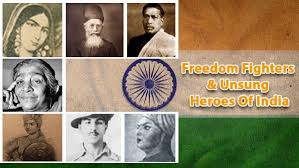
HISTORY & SIGNIFICANCE OF INDIA’S NATIONAL ANTHEM EXPLAINED
India's national anthem, a symbol of unity and patriotism, was first performed by Rabindra Nath Tagore on December 27, 1911, during a Congress meeting in Calcutta. Who would have imagined that this song would one day become the national anthem of India, embodying the spirit and responsibilities of every Indian citizen? According to Article 51A(a) of the Indian Constitution, "Every Indian citizen has a responsibility to uphold the Constitution's values and institutions, as well as the National Flag and the National Anthem."
In 1941, Subhash Chandra Bose adopted a slightly modified version of the original song, named ‘Shubh Sukh Chain,’ which gained widespread popularity. On August 15, 1947, Captain Thakuri of the Indian National Army (INA) was invited to perform it with his orchestra group, marking its significant role in India's independence movement.

Originally penned by Tagore in Bengali as ‘Bharoto Bhagyo Bidhata,’ the song was later edited and translated into ‘Jana Gana Mana.’ It was officially adopted as the national anthem on January 24, 1950, as announced by then-President Dr. Rajendra Prasad.
Major Translations
Netaji Subhash Chandra Bose was the first to translate the national anthem from Bengali, which had been Sanskritized, into Hindi. Captain Abid Ali provided another Hindi translation, while Captain Ram Singh composed the music. Margaret Cousins, the wife of the renowned Irish poet James Cousins and the dean of Besant Theosophical College, translated it into English. The national anthem has since been translated into all 22 national languages of India, along with many regional languages.

Rules & Regulations
Respecting the national anthem is a fundamental duty as per Article 51A, section (a) of the Indian Constitution. In 1971, the National Honour Act of 1971, section (3), was introduced, mandating strict punishment for any disrespect shown towards the national anthem. It is now a tradition to play the national anthem before every film screening in schools, colleges, government buildings, and movie theatres across the country on Republic Day and Independence Day.

This anthem not only signifies India's rich cultural heritage but also the sacrifices made by freedom fighters like Subhash Chandra Bose and Bhagat Singh, and the valor of the Indian Army. It remains a powerful reminder of the nation's unity and the enduring spirit of its people. SHOW YOUR PATRIOTISM THROUGH THESE MERCHES!
[The images used in this blog post are not owned by Anime Devta, they are just for entertainment purposes]
| SUBHASH CHANDRA BOSE | BHAGAT SINGH | FREEDOM FIGHTERS | INDIAN ARMY | NETAJI | INDIAN NATIONAL ARMY | INDEPENDENCE | INDEPENDENCE MOVEMENT |
~Mimansa Sharma

